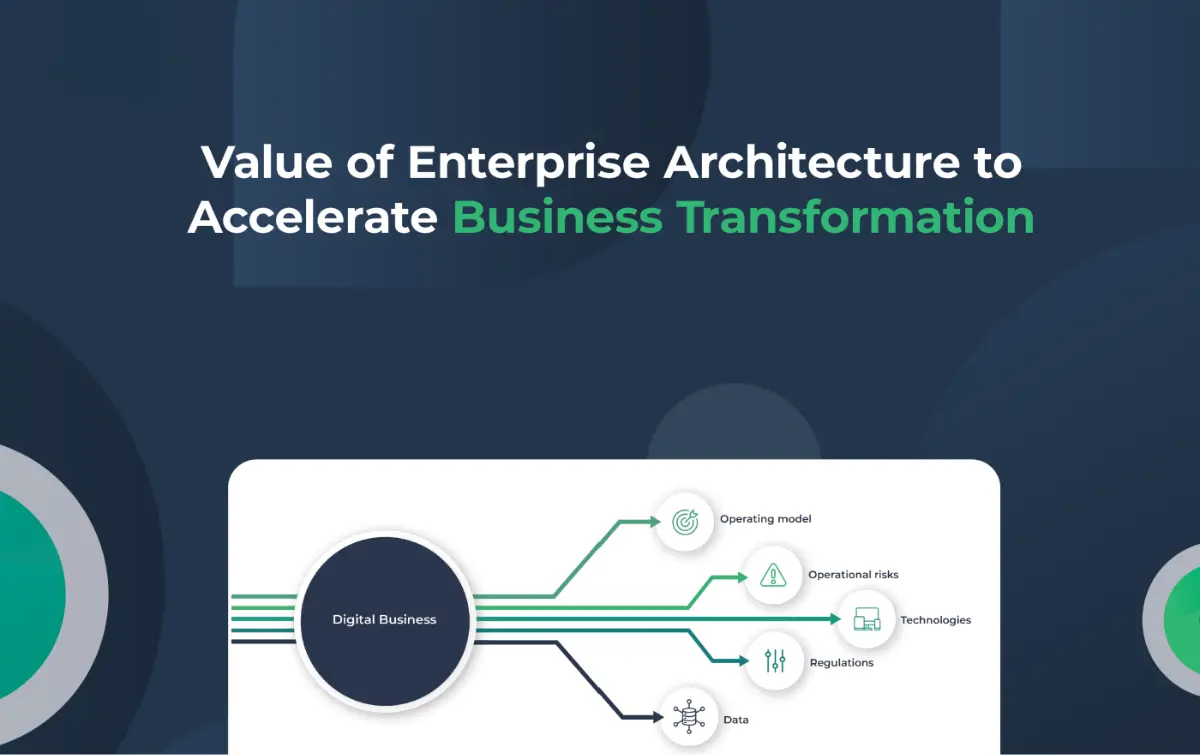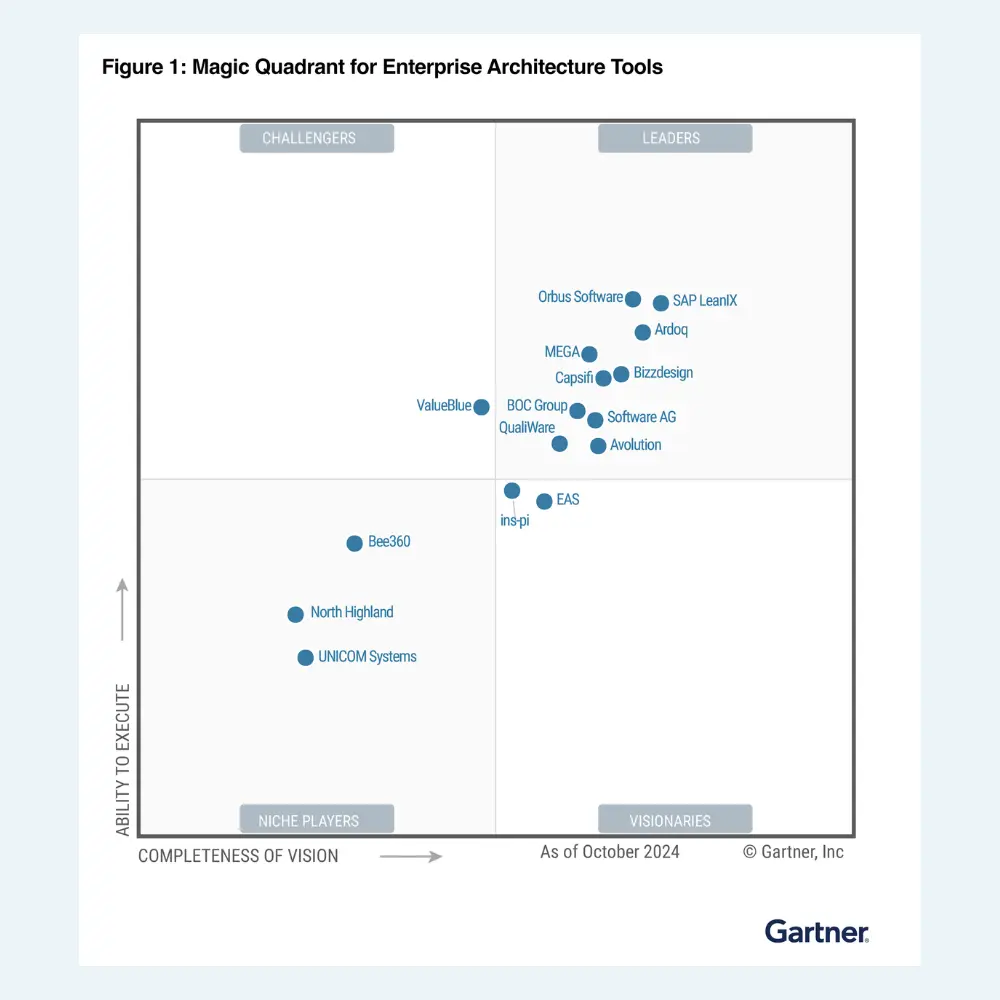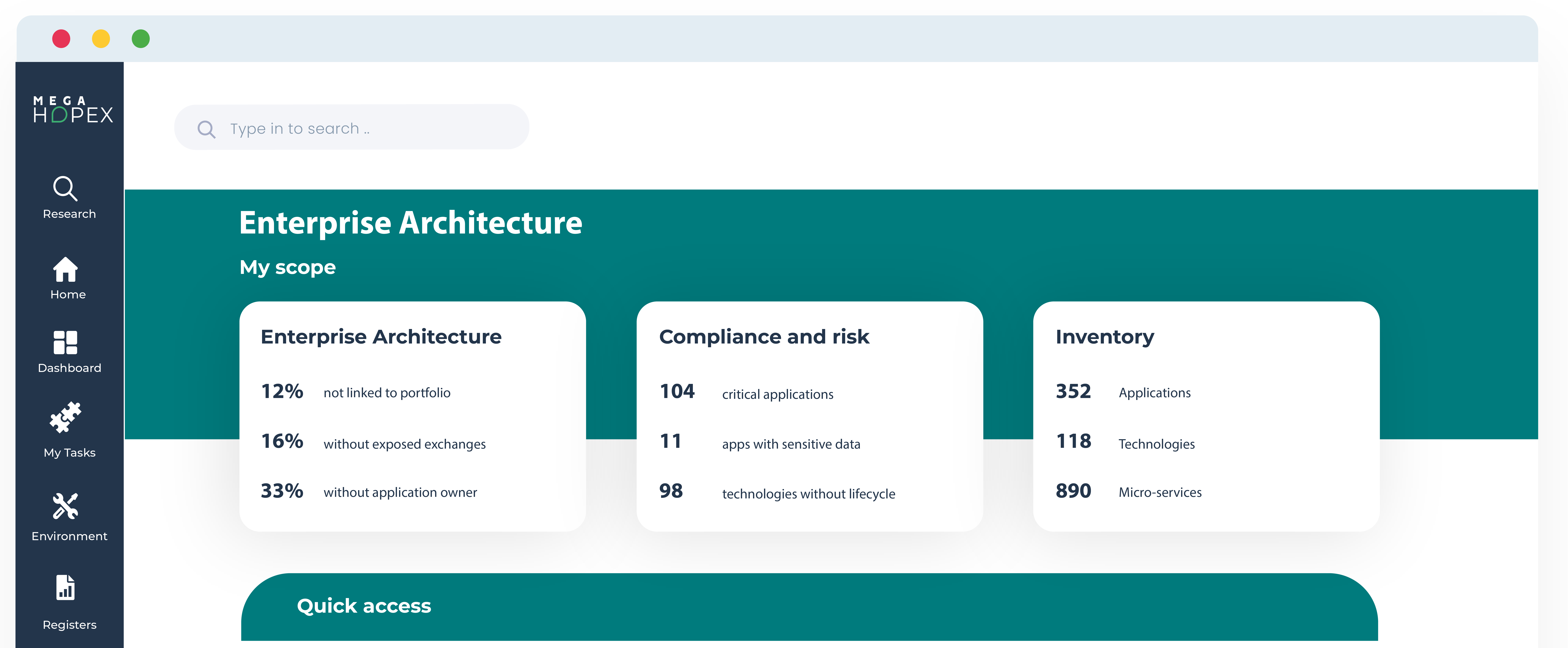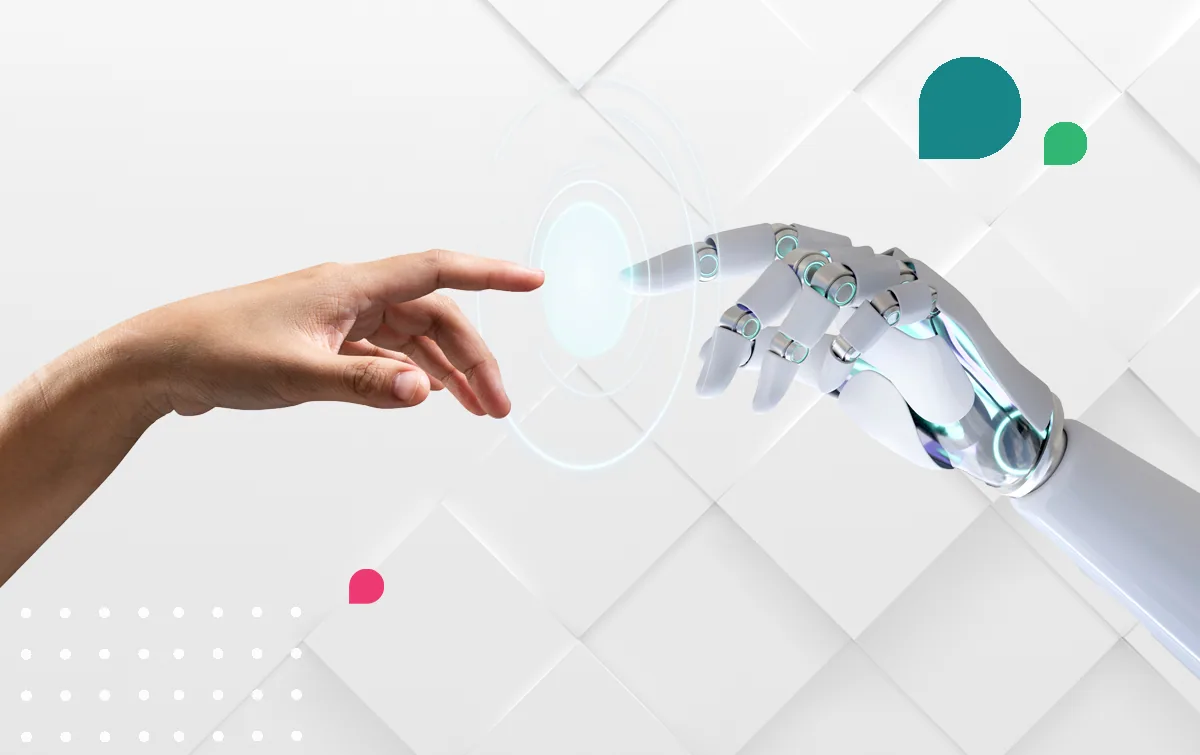
Disruptive Technology Trends Impacting Enterprise Architecture
As we approach 2024, the landscape of enterprise architecture (EA) is poised to undergo significant changes. With new and disruptive technologies paying no heed to traditional enterprise architectures, it is becoming increasingly necessary to adapt EA to changing technological landscapes.
What is Enterprise Architecture, and How Does it Enable Digital Transformation?
Enterprise architecture (EA) is a discipline that aims to align an enterprise's business and information technology (IT) strategies, enabling efficient and effective digital transformation.
It provides a structured approach to working with stakeholders, defining the organization's current state and a roadmap of future changes to achieve desired business outcomes.
Learn more about EA.
The Role of an Enterprise Architect in Digital Innovation
The modern enterprise architect is a technology expert and a trusted advisor for business leaders.
They guide technological changes that enable the business to achieve its goals through digital innovation.
The EA helps CIOs adopt scalable and configurable software development approaches while providing clear visibility into the organization's architecture's current state and defining the future roadmap.
How Can Enterprise Architecture Reshape Operating Models?
The trend toward modern enterprise architecture has significantly focused on business capabilities.
This shift allows enterprise architects to redefine operating models by breaking down silos and creating more collaboration within companies. They help develop solutions that address business needs through innovation, optimization, and streamlined processes.
Why is Enterprise Architecture Critical for Successful Digital Transformation?
Enterprise Architecture helps companies efficiently navigate the complexities of digital transformation. By understanding the organization's current state, EA professionals establish a roadmap, incorporating new technologies to support the adoption of digital business.
By implementing innovative and disruptive technologies that align with the business's strategic goals, EA can help companies stay ahead of the curve, delivering business value and competitive advantage.
What technology trends are most impacting enterprise Architecture?
Gartners' "Top 10 Strategic Technology Trends for 2022" report highlights a range of disruptive technologies that have the potential to reshape EA in the coming years.
Key Tech Trends Impacting Enterprise Architecture in 2022 and 2023
In 2023, several critical disruptive technologies will significantly impact enterprise architecture. These technologies are poised to transform various aspects of businesses, enabling new opportunities and driving innovation. Here are some of the key disruptive technologies looming in 2023 for EA:

- Artificial Intelligence (AI) and Machine Learning (ML): AI and ML technologies are advancing rapidly and are being increasingly integrated into enterprise systems. These technologies enable businesses to automate processes, analyze large volumes of data, and gain valuable insights. AI and ML can optimize decision-making, enhance customer experiences, and improve operational efficiency across various industries.
- Internet of Things (IoT): IoT refers to the network of interconnected devices embedded with sensors and software that enables them to collect and exchange data. In an enterprise context, IoT can revolutionize operations by providing real-time insights, optimizing processes, and allowing remote monitoring and control of assets. IoT can enhance supply chain management, asset tracking, and predictive maintenance, among other applications.
- Blockchain: Blockchain is a distributed ledger technology that enables secure, transparent, and immutable record-keeping. It has the potential to disrupt traditional business models and streamline processes by eliminating intermediaries, reducing fraud, and improving transparency. Blockchain can be applied to various areas, such as supply chain management, identity verification, and smart contracts.
- Cloud Computing: Cloud computing has already significantly impacted, but its influence is expected to grow even further. Cloud technologies provide scalable, on-demand access to computing resources, enabling businesses to enhance flexibility, agility, and cost-efficiency. In 2023, we can expect to see advancements in cloud services, including serverless computing, hybrid cloud architectures, and edge computing. Learn more about Cloud Computing.
- Cybersecurity: With the increasing number of cyber threats and data breaches, cybersecurity remains a critical concern for enterprises. Disruptive technologies related to cybersecurity will focus on improving threat detection, prevention, and response mechanisms. This includes advancements in AI-driven security analytics, biometric authentication, and decentralized identity management systems.
- Augmented Reality (AR) and Virtual Reality (VR): AR and VR technologies are expanding beyond gaming and entertainment and finding practical applications in the enterprise. These immersive technologies can enhance training, simulation, remote collaboration, product visualization, and customer experiences. In 2023, we can expect to see more innovative use cases for AR and VR in enterprise architecture.
- Robotic Process Automation (RPA): RPA involves using software robots to automate repetitive, rule-based tasks. It enables businesses to streamline workflows, reduce errors, and improve operational efficiency. RPA can be integrated with existing enterprise systems, complementing human workforces and freeing employees to focus on higher-value tasks.
These disruptive technologies are expected to shape enterprise architecture in 2023 and beyond, offering businesses opportunities to innovate, improve productivity, and stay competitive in a rapidly evolving digital landscape.
The evolution of technology and its impact on enterprise architecture is subject to numerous variables, including advancements, market trends, and unforeseen developments.
However, based on current trends and ongoing research, we can speculate on some potential areas of focus and emerging technologies that could shape enterprise architecture in 2024:
- Edge Computing: Edge computing is expected to gain further traction in 2024. This technology brings computing resources closer to the data source, reducing latency and enabling real-time processing and analysis. As more devices connect and generate massive amounts of data, edge computing can enhance efficiency and support time-sensitive applications like autonomous vehicles, smart cities, and industrial IoT.
- 5G Networks: The widespread adoption of 5G networks will likely continue in 2024. With faster speeds, lower latency, and increased capacity, 5G can enable new applications and services that rely on high-speed data transmission. In enterprise architecture, 5G can facilitate IoT deployments, support bandwidth-intensive tasks, and enhance real-time communication and collaboration.
- Extended Reality (XR): Extended Reality, which encompasses augmented reality (AR), virtual reality (VR), and mixed reality (MR), is expected to advance further in 2024. XR technologies can transform various industries, including training, education, healthcare, and design. They can enhance immersive experiences, remote collaboration, and visualization, bringing new possibilities to enterprise architecture.
- Quantum Computing: While still in its early stages, quantum computing holds great promise for solving complex problems that traditional computers struggle with. In 2024, we may see further progress in quantum computing research, leading to algorithms, hardware, and applications advancements. Quantum computing can potentially revolutionize cryptography, optimization, and drug discovery.
- Data Privacy and Ethics: As technology advances, data privacy and ethics will remain important considerations for enterprises. In 2024, we can expect to see an increased focus on regulations, policies, and practices related to data protection, responsible AI usage, and ethical considerations in data collection and use. Enterprises must ensure robust data governance frameworks and implement privacy-centric approaches to maintain trust with customers and stakeholders.
These are just a few speculative areas that could shape enterprise architecture 2024. The actual developments and their impact will depend on the pace of technological advancements, market dynamics, and various other factors that can influence the direction of innovation.
What are the Benefits of Edge Computing for Enterprise Architects?
Edge computing is a decentralized approach to computing that moves computation from a central location to the edge devices or IoT gateways.
This technology enables data processing near where it is generated and consumed, reducing latency and improving performance. For enterprise architects, the benefits of edge computing include:
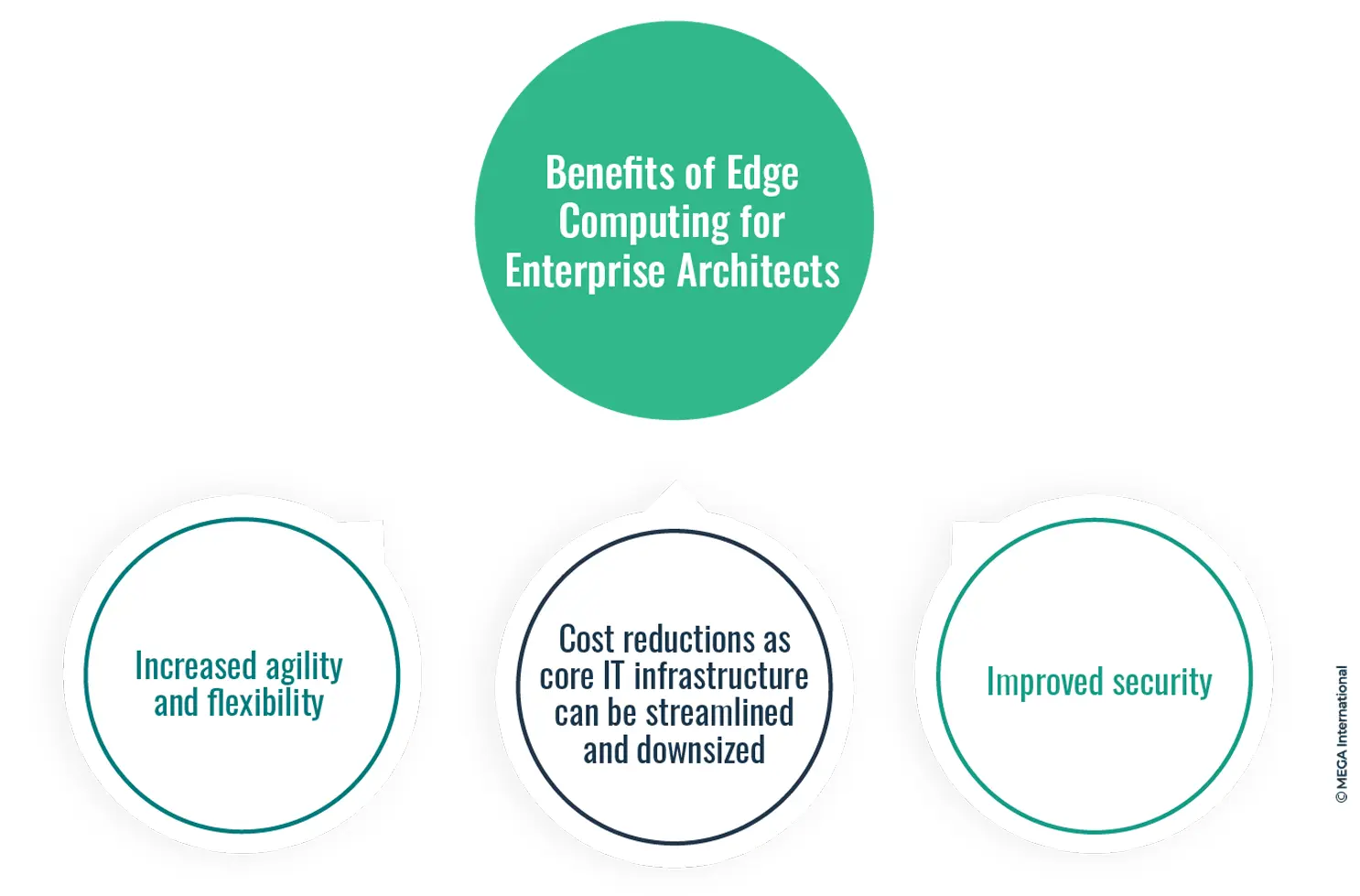
- Increased agility and flexibility.
- Improved security.
- Cost reductions as core IT infrastructure can be streamlined and downsized.
How Do Microservices Fit into the Enterprise Architecture Roadmap?
Microservices are an architectural pattern that structures an application as a collection of small, independent services that communicate with each other through APIs.
These services can be deployed independently and are scalable, enabling flexibility and the ability to respond quickly to customer needs. However, incorporating microservices requires extensive restructuring of traditional monolithic applications, which can be challenging.
Enterprise architects can help guide this transformation by breaking down processes, migrating services to the cloud, and reshaping the data architecture.
Agile and Automation in Enterprise Architecture
What is the Significance of DevSecOps in Enterprise Architecture?
DevSecOps describes the integration of IT security into the software development process. This process integrates security into every stage of application development.
By incorporating DevSecOps, EA professionals can prioritize security from the beginning, ensuring smooth and secure software development processes while aligning with the business's needs.
How Does Cloud Computing Change the Face of Enterprise Architecture?
Cloud computing is all about flexibility and scalability. It provides a way to optimize IT resources by eliminating redundant infrastructure and enabling cost-saving.
Cloud computing allows enterprise architects to create hybrid IT systems. This shift offers agility, flexibility, and cost savings, allowing EA professionals to orchestrate services that reside in the cloud or on-premises.
What are the Benefits of Agile Methodologies in Enterprise Architecture?
Agile methodologies are an iterative approach to software development that emphasizes flexibility and collaboration. By incorporating agile, EA professionals can work with business leaders using collaboration and agile frameworks to prioritize and deliver solutions within a set timeline and budget.
This offers increased adaptability in the face of changing business requirements.
The Intersection of Artificial Intelligence and Enterprise Architecture
Why is AI Integral in Enterprise Architecture?
Artificial intelligence (AI) is integral to the digital transformation landscape. It automates tedious and repetitive tasks, identifies and remediates potentially faulty systems, and offers insights into data and patterns, increasing efficiency and productivity.
For enterprise architects, AI provides a way to optimize and automate enterprise architecture processes, identify deficiencies, and offer comprehensive solutions to improve processes.
How Can Machine Learning Benefit Enterprise Architects?
Machine learning (ML) can potentially revolutionize the way enterprise architecture is executed. It offers the ability to learn from real-time data, identifying patterns and trends to make informed decisions.
ML processes can support predictive analysis for enterprise architects, providing context and insights into the current state of the organization's architecture.
Get a complimentary copy: 2024 Gartner® Magic Quadrant™ for Enterprise Architecture Tools
The Internet of Things in Enterprise Architecture
How do IoT Devices Figure into the Enterprise Architecture Landscape?
IoT devices are quickly becoming a significant part of the modern enterprise architecture landscape, generating massive amounts of data.
They offer the potential to optimize various business processes, such as real-time monitoring assets and connecting different system parts.
EA professionals must understand how to integrate IoT devices, ensure robust data handling approaches, and support compliance and security measures.
What are the Key Features of a Successful IoT Enterprise Architecture?
A successful IoT EA requires establishing a balance between innovation and management. The right architecture must support connectivity between IoT devices, sensors, and systems while maintaining compliance and security measures. EA professionals must ensure that they select the right platforms, address data governance and management issues, and enable integration with existing IT systems to create a seamless and effective IoT architecture.
How Do Enterprise Architects Overcome IoT Implementation Obstacles?
Companies that successfully implement IoT architecture tackle the inherent challenges head-on, addressing security and data privacy, scalability, and the complexity of ensuring connectivity between devices and systems. EA professionals must understand these complex issues and work closely with business stakeholders to develop robust solutions that address these concerns while improving overall enterprise architecture design.
Summary
Enterprise Architecture has recently undergone significant transformative changes due to disruptive technologies such as AI, IoT, blockchain, cloud computing, and cybersecurity tools.
Potential trends include edge computing, 5G networks, extended reality, and quantum computing.
These innovations will bring agility, scalability, flexibility, and improved security.
Successful Enterprise Architecture practices involve understanding and incorporating these technologies into their organization to innovate, improve productivity, and remain competitive.
FAQs
Disruptive technologies are those that fundamentally alter the way businesses operate. These are new technologies that disrupt the status quo and create new markets or value networks.
Disruptive technologies are impacting enterprise architecture by changing the way businesses operate. Enterprise architecture enables companies to identify and adopt new technologies, implement new business models, and create new opportunities. As disruptive technologies mature, enterprise architecture must evolve to take advantage of these technologies.
Some emerging technologies disrupting enterprise architecture include edge computing, microservices, and cloud-based computing. These technologies enable businesses to reduce costs, create new business opportunities, and improve customer experience.
Enterprise architecture can help businesses adopt disruptive technologies by providing a roadmap. The enterprise architecture team can work with business and development teams to identify technologies that align with enterprise strategies and create an operating model for adoption.
Low-code platforms can impact enterprise architecture by enabling business users to create new applications without IT resources. This can improve agility and enable businesses to create new applications quickly. The rise of unmonitored applications used within organizations, known as "shadow IT," can result from this trend. Enterprise architects aim to identify and minimize shadow IT instances within the organization.
Edge technology is a critical component of enterprise architecture. It enables businesses to process data closer to the source, reducing latency and improving performance. The enterprise architecture team can work with business teams to identify new opportunities for edge technology and create a roadmap for implementation.
The value of Enterprise Architecture to accelerate business transformation
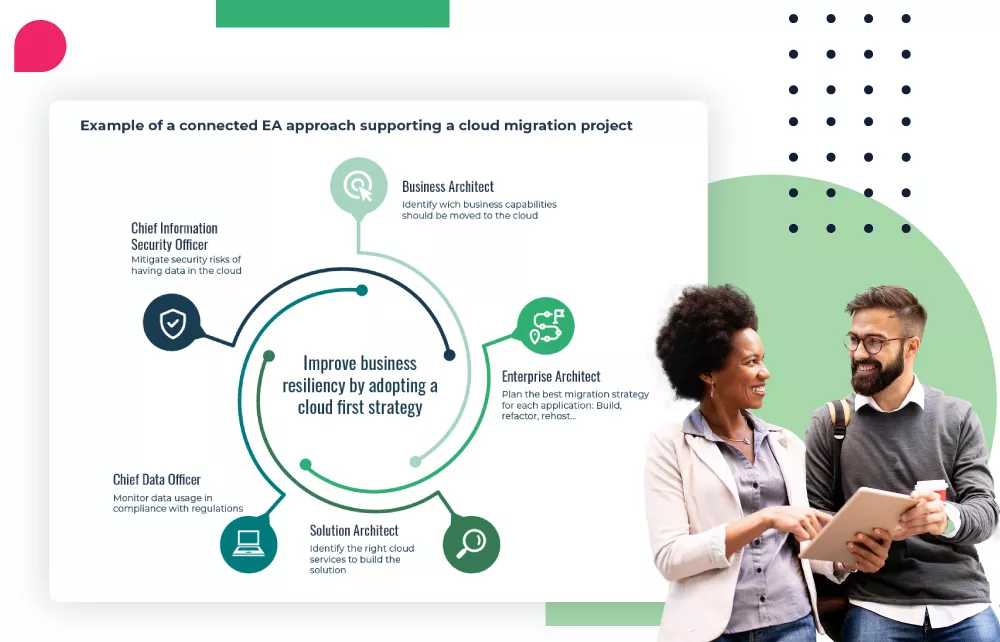
Access this white paper to learn:
- The evolution of the enterprise architecture practice
- How to Deliver Value through a Connected Enterprise Architecture Practice
- Strategies for Adopting a Business-Outcome-Driven Approach
- How to Use Data-Driven Tools to Enhance Your Enterprise Architecture Connectivity
Enterprise Architecture Related Content
Shift from a documentation tool to an operational tool and accelerate business transformation
MEGA HOPEX for Enterprise Architecture
Request a demonstration of HOPEX for EA, and see how you can have immediate value of your projects.










